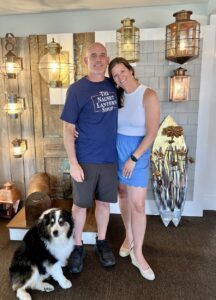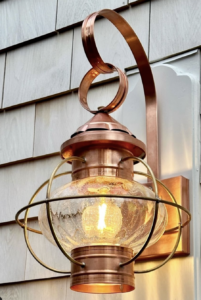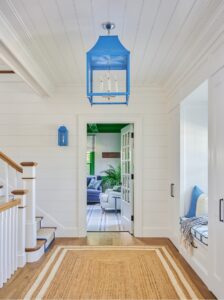When Kelly and Chris Berardi found out the Nauset Lantern Shop in Orleans was looking for a new owner, it seemed as though destiny was calling. Chris, a builder, had been looking for projects that would involve more craftsmanship.

Both Kelly and Chris have roots on the Cape. She grew up in Yarmouth, and Chris spent summers at his family’s cottage in Dennis. Their paths crossed when they were students at Villanova University. After getting married and trying out both the West Coast and Boston, they decided to call the Cape home in 2002. It was their accountant who mentioned that the store was coming up for sale.

The couple, who live in Orleans, knew that acquiring a legacy brand came with responsibility. Chris approached the seller with a proposition: he wanted to work as an apprentice before deciding. Once he got into the shop, he knew the work was right for him. “It just felt right,” says Chris. “His talents are in math and art,” says Kelly, “the perfect recipe for manufacturing lighting.”

Materials matter to the couple as much as design does. “Exterior lanterns in a salt-rich coastal environment demand that,” says Kelly. “We work with nonferrous metals to ensure they won’t corrode or wear down over time.” They source all their metals, glass, and other materials domestically, she adds.

The store just celebrated its 65th anniversary and is still turning out the signature lanterns for which it became famous, on old-school machinery in its basement workshop by artisans Chris says range in age from 18 to 88 — a fact that he says creates a nice team atmosphere.
Metals are cut with a foot shear or by hand, and clients sometimes watch as their lanterns are soldered.

But the Berardis have introduced modern updates, too, during their five years running the business. What matters, Kelly says, is not the vintage of the design but that the lanterns they make pay homage to a home’s architectural details and work well in terms of scale and details. To accomplish that, “We get to know our clients,” says Kelly. “We are not mass produced, but in fact the exact opposite.”



